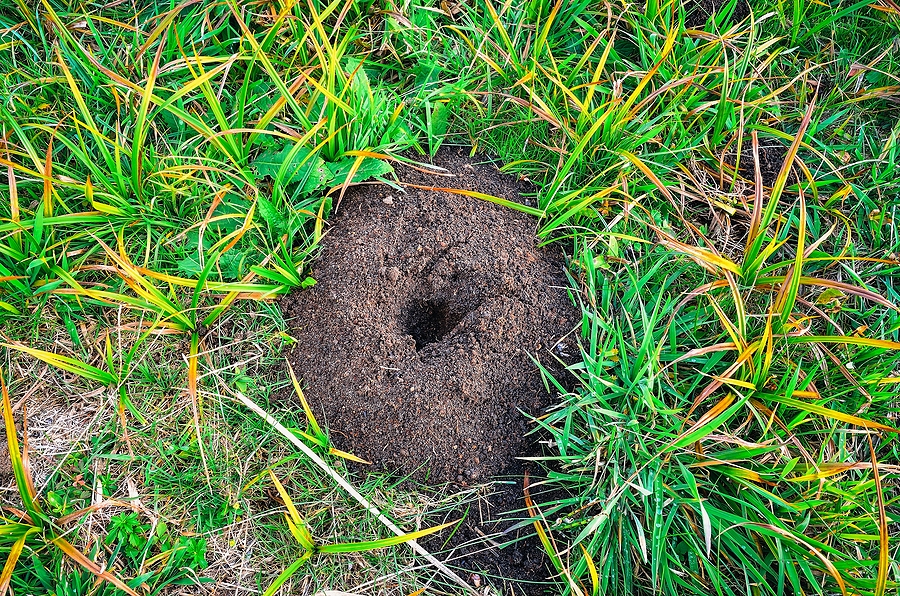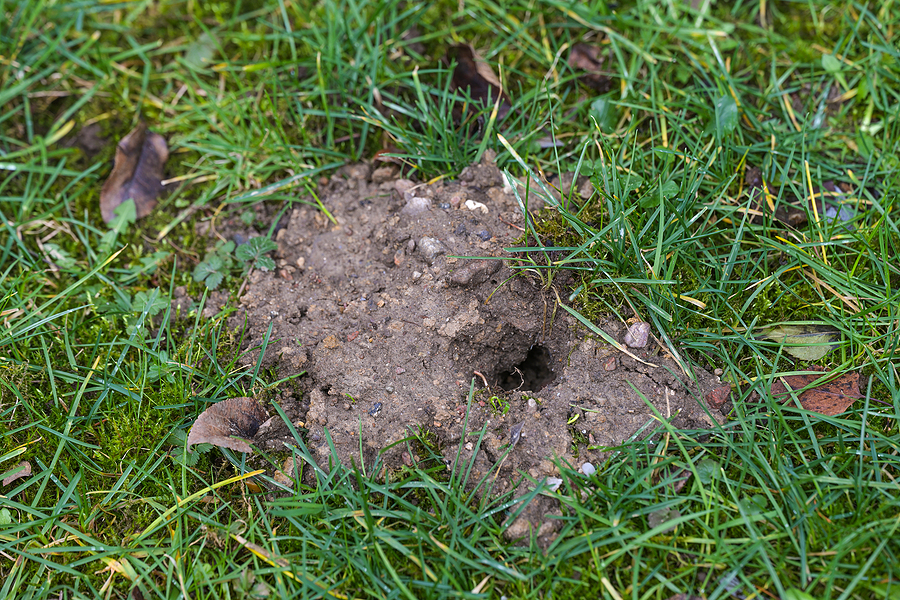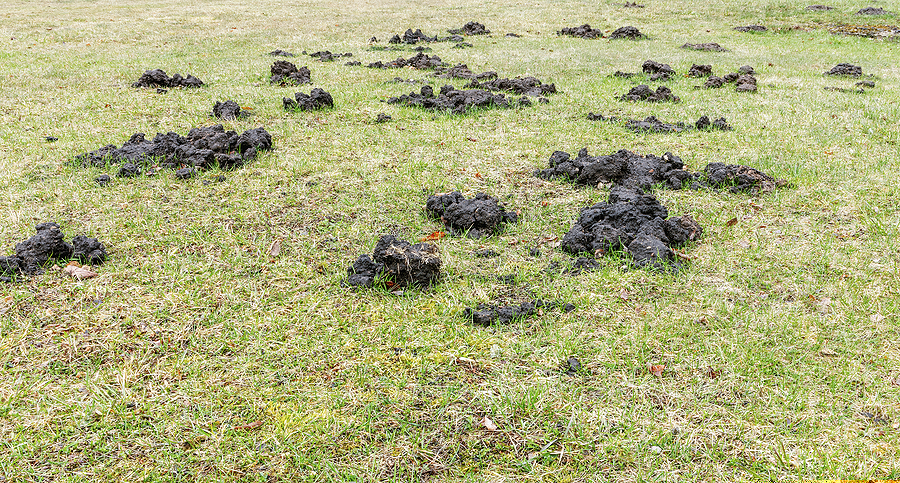Are yard moles making a mess of your manicured lawn? To many homeowners and gardening enthusiasts, these subterranean creatures provoke a mixture of curiosity and frustration. Moles are among the most enigmatic critters that can affect the health of your yard – and tackling the issue head-on begins with knowledge. This in-depth article sets out to answer your most pressing questions about moles and the havoc they wreak on your lawn.

Understanding Moles and Their Intricacies
Before we even begin to hoof it out into the yard to battle these burrowers, we need to understand what we’re up against. Moles are not rodents, as is widely believed, but belong to a group known as Insectivora, which they share with shrews and hedgehogs. Their unique physical characteristics reflect their lifestyle as underground dwellers. With paddle-like forefeet, robust shoulder girdles, and bodies built for tunneling, moles are nature’s drillers.
What Attracts Moles to My Yard?
The primary draw for moles, who are solitary animals, is the abundance of food. Earthworms, their favorite meal, and insects and grubs form the bulk of their diet. Yards with well-aerated, moist soil and a robust earthworm population are like fast-food chains for moles.
How Do I Know if Moles are in My Yard?
Moles are secretive, so you might not catch sight of one live. However, telltale signs include the infamous ridges, molehills, and tunnels they create as they dig in search of their subterranean meals. Contrary to what you might believe, these signs in your yard often point to only one or two moles, as a single creature can excavate an extensive network of tunnels.
Can Moles Damage My Structures or Health?
Fortunately, moles are not known to carry diseases that affect humans. However, their excavation can inadvertently lead to damage, especially to the roots of your delicate garden flora, as their tunnels undermine the soil structure.
Interpreting Mole Signs and Sightings in Yards
Molehills are a pretty clear indication moles are at play, but there are more subtle clues. Understanding these signs can help you discern whether you have a mole problem or something else is at work in your yard.
How Do I Distinguish Mole Damage from Other Pests?
Moles’ signature tunnelling is quite distinguishable from the burrows made by other garden pests. Gophers and voles, for example, make more open, row-like tracks, while moles’ tunnels are a complex network of underground passageways.
Can Moles Indirectly Impact Plants and Lawns?
Absolutely. The channels moles create can disturb the root system of plants and lawns, leading to a lack of support, water, and nutrients. This, in turn, can weaken the health of your garden’s greenery.
Are Molehills a Sign of More Significant Damage?
Not necessarily. In fact, the pushing up of soil that creates a molehill could be seen as earth’s natural recycling process. Moles are aerating the soil, improving its health, and distributing nutrients more evenly. But if the matter of mole activity becomes too punitive, the ongoing upheaval of your garden’s ground can over time create a noticeable issue.
Addressing Common Concerns with Yard Moles
When it comes to moles, some homeowners are more than just concerned – they’re downright perplexed. Here are the answers to some of the most commonly pondered questions about yard moles and their habits.
Will Moles Venture Indoors?
Across the board, moles prefer to stay put in their underground universe. While there are isolated incidents of moles finding their way into homes, it’s highly unlikely and generally not a concern.
Can Moles Damage Watering Systems and Lawn Care Equipment?
Moles tunnel under the surface, so they rarely come into contact with above-ground lawn equipment. If there’s consistent damage in your garden, it’s more likely the result of animals horizontally on the ground, like squirrels or birds.
Do Moles eat Bulbs and Plants?
Not directly. Moles are carnivorous and feed primarily on insects, grubs, and earthworms. However, if your garden’s plants and bulbs are weakened by the root disturbance caused by moles’ tunnels, they may become more susceptible to secondary pests and diseases.
Practical Tips for Dealing with Moles in Your Yard
It’s not all doom and gloom. There are practical strategies every homeowner can employ to manage moles and keep your lawn looking its best.
Is There a Safe Way to Remove Moles from My Yard?
Absolutely. Like with all wildlife, it’s best to employ humane methods to deter moles. Traps designed to catch them without harming them are available and effective.
Can I Use a Mole Repellent?
Many repellents exist, such as sonic devices that emit vibrations to deter moles from tunneling, or natural repellents like castor oil, with varied results. However, the key is to be persistent and patient with these methods.
What Kind of Professional Should I Call for Mole Removal?
Wildlife removal services are often the best bet to ensure moles are removed from your property with minimal stress and impact. Look for professionals who employ ethical practices and give a guarantee on their work.
Keeping Moles Away: Your Lawn’s Line of Defense
Prevention is always one of the best forms of control. By taking steps to make your yard less appealing to moles, you can avoid dealing with mole problems altogether.
What are the Best Ways to Keep Moles Off My Property?
Improving lawn and garden maintenance is a great step in the right direction. Regular mowing, soil aeration, and watering practices that don’t over-saturate the ground will make your lawn less inviting to moles.
Can Plants or Landscaping Deter Moles?
Some plant species are reputed to repel moles because of their scent or taste. These include daffodils, marigolds, and alliums. Additionally, moles might avoid areas with rocky soils or strong root networks that make tunneling more challenging.
Will Mole Control Affect Other Wildlife in My Yard?
When done right, mole control should minimize its impact on other garden visitors. Employing non-lethal methods and regularly inspecting for unintended captures is paramount.
Conclusion
Moles might be frustrating visitors to your garden, but with insight and the correct approach, they don’t have to be permanent residents. The health of your yard is a reflection of the way you understand, prevent, and solve issues like mole damage. Keep learning, keep adapting, and know that your beautifully trimmed, healthy lawn is worth the effort. If mole problems persist, don’t hesitate to reach out to the professionals. It’s time to protect your green paradise against these underground warriors, and you don’t have to do it alone.
Have you been struggling with lawn moles and are feeling frustrated? If that’s the case, you’ve come to the right place. Contact Mole Miners at 629-277-0933 for TWRA licensed and insured yard mole removal in Nashville, Tennessee. We serve all greater Nashville areas, including Hendersonville, Brentwood, Kingston Springs, Clarksville, Murfreesboro, Ashland City, Gallatin, Lebanon, Smyrna, Nolensville, Mt. Juliet, Pleasant View, and all nearby towns!
Related Posts:
How to Deter Moles from Your Yard Without Chemicals
Tips for Gardeners: How to Get Rid of Moles in Your Lawn
A Comprehensive Guide to Using Animal Mole Repellents


